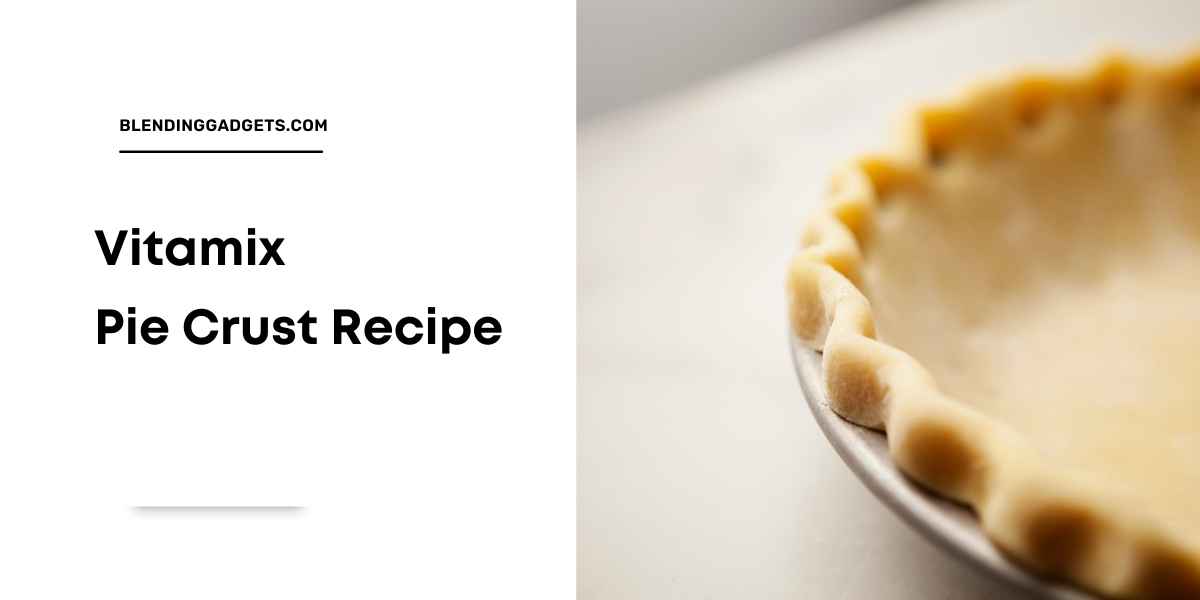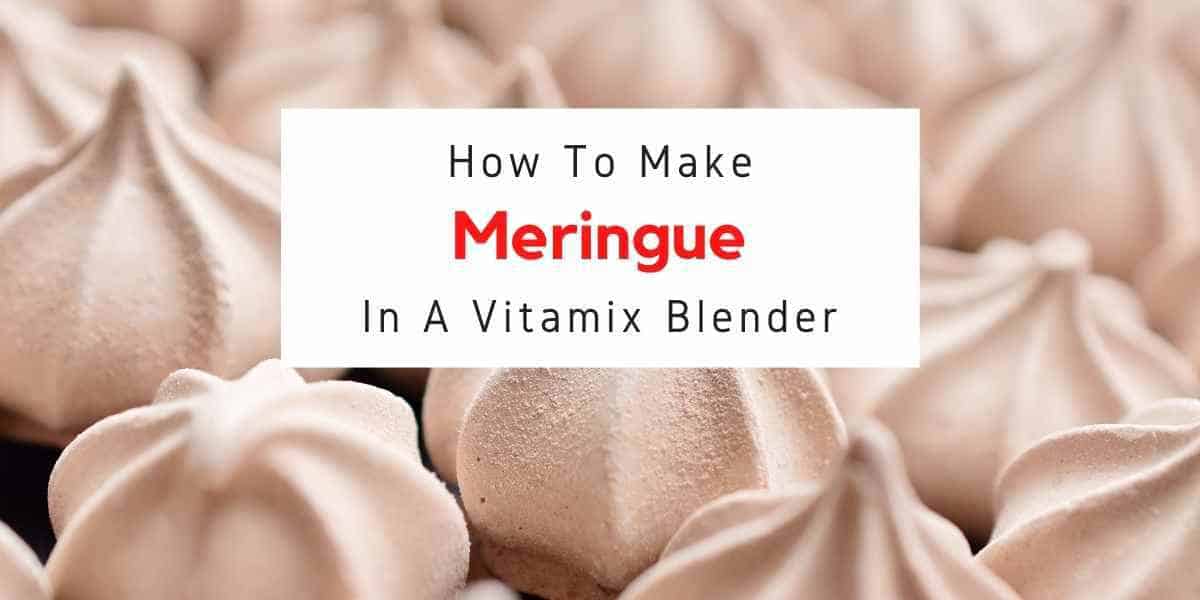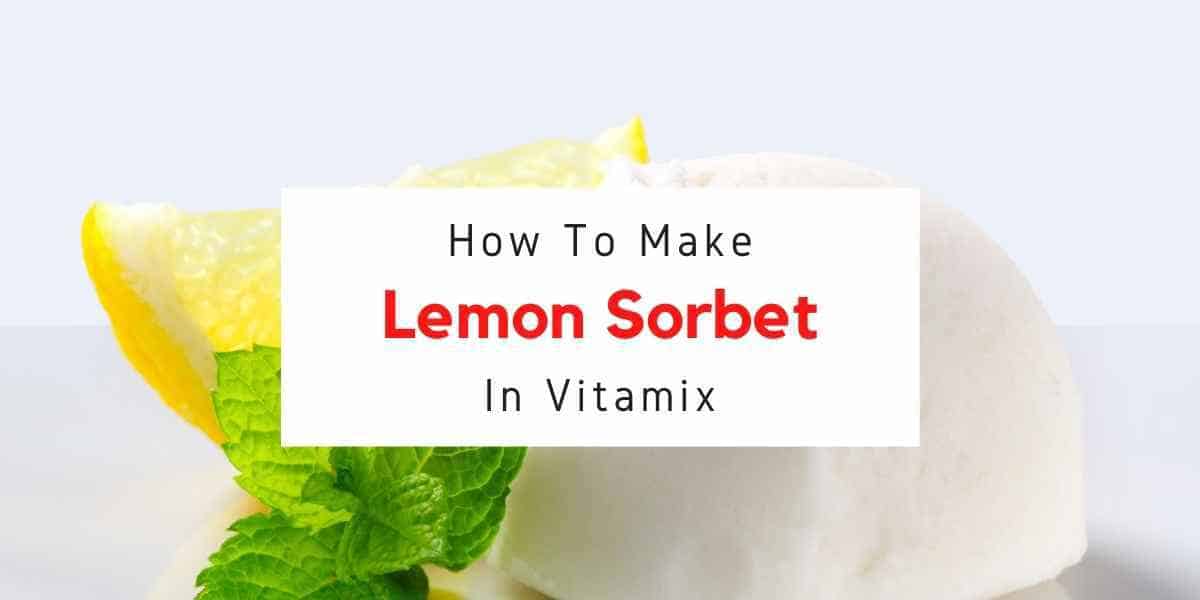Pie crust is a crucial part of any pie. It’s the base, and what holds everything together.
But it can be tricky to make from scratch, especially if you’re new to baking or don’t have a lot of time on your hands.
That’s why we’re going to show you how our Vitamix blender can help!

What Is A Pie Crust?
A pie crust is a single-crust pastry crust often found in fruit pies and other baked desserts.
Why Are They Called Pie Crusts?
Pie crusts are called this because they contain fat (usually lard or butter) that resembles the texture of the dough used to make pie crusts.
The term ‘pie’ refers to anything found inside them like eggs, meat, vegetables, etc. If you’re making an apple pie, for example, the apples would be placed inside of it!
This is one reason why many recipes for blenders include pie crusts because it’s an easy way to make healthy, homemade pies with any flavor you want!
Can You Make Pie Crust In A Vitamix Blender?
You sure can! Even if you’re not looking for healthier alternatives, Vitamix blenders are great ways to make pie crust.
The blades cut through the fat in butter and break up gluten in flour more efficiently than most other kitchen tools out there.
This will help your dough come together very quickly, with less mess and fuss.
What Type of Pie Crust Can You Make?
You can use Vitamix blenders to make any kind of pie crust you’d like!
When it comes down to it, any recipe that calls for a 9-inch crust pastry for a standard pie pan means you’ll be able to put the ingredients into your Vitamix blender instead.
This includes apple pies, chocolate cream pies, pumpkin pies, lemon meringue pies, and any other kind of pie you can think of!
What Ingredients Do You Need To Make Pie Crust In A Vitamix Blender?
In order to make a simple pie crust from scratch in your blender, all you need is:
- 1 cup flour (you may want to use ½ tsp salt if the recipe calls for it or just add this into your dough when it comes out of the blender. Add more salt than usual if using unsalted butter.)
- ½ cup cold salted butter (You can also use lard, shortening, or coconut oil instead of butter!)
- 2 tbsp ice-cold water (Bonus points if you put this in before adding your flour!)
- A quick shake of salt (optional but adds to the flavor. If using unsalted butter, just put in a pinch of salt into the dough.)
What Should You Do Before Putting The Ingredients Into The Blender?
Combine all of your dry ingredients first!
Make sure they’re nice and mixed up so nothing sticks to the side of your blender cup.
This means you can dump them in once everything is combined without having trouble. While it’s not necessary, it will definitely help save time and prevent frustration later on.
Also, if you want flaky pie crust rather than one that becomes crumbly when baked, make sure to cut your cold butter into small cubes before adding it to the mixture.
This will help it work its way into the flour and leave those pretty flaky layers that we all know and love.
How To Make Pie Crust With Your Vitamix Blender
- Put all dry ingredients in first.
- Then add your wet ingredients to the blender cup.
- Use a spatula to scrape out any leftover bits of batter or dough from around the edge of the mixing bowl before turning on your Vitamix blender. If you don’t, they’ll get stuck inside and create trouble as it mixes!
- Turn on your blend for 10 seconds at Variable 1 (or whatever speed is recommended by your recipe).
- Stop and check to see if it’s sticking together. If yes, continue blending for a few more seconds until it comes together into a dough. If it’s still dry, turn off your blender and add a small amount of water at a time.
- Be careful not to over-mix!
- Once everything is combined, break the dough into two halves and form each half into a disk. Wrap them in plastic wrap or aluminum foil and allow them to chill in the refrigerator for at least an hour before rolling them out on top of a baking sheet.
- Roll out your cold dough on a well-floured surface with a well-floured rolling pin.
- Use quick motions when going around the edges that stick up so they come down flat after being rolled out flat. You can use any size pie pan you like but make sure to use one with a lip around the edge to help keep your pie crust from spilling over.
- Trim any excess dough coming out of the edges before crimping them all around or fluting them with a fork. This will also help you create an even, flat bottom that won’t spill anything out when you put it in the oven.
- If making a pre-baked pie crust, line it with parchment paper and fill it up with dry beans to weigh down the sides so they don’t rise up while cooking.
- Bake for 20 minutes at 375 degrees Fahrenheit before removing weights and cooking another 5 minutes until lightly golden brown on top.
- If baking right away, bake for 10-15 minutes until just golden brown on the edges and darker brown in the middle.
- Allow cooling completely before filling with your favorite pie filling. Use a fork to create tiny holes at the bottom for better drainage and to help prevent any unwanted spills!
What Tips And Tricks Do You Have For Successful Pie Crust Making With Your Vitamix Blender?
Since it’s vitally important to use cold ingredients when making pie crust, it’s also important not to over-mix them together. This will warm everything up too much and make your dough sticky instead of crumbly as we want it.
It might take some practice but you’ll find that after a few tries, you’ll know exactly what consistency is perfect and how long you need to blend it.
Pie crusts also provide the perfect opportunity to clean out your blender cup!
Since we’re using it to create a dough, there’s nothing that can ruin this mixture and make things stick like certain veggies or greens.
Throw everything you want into the blender and give it a whirl before making your pie crust to chop up anything bigger than bite-sized pieces.
This will make sure everything is ready for the oven after being baked together with your pie’s filling.
What Can I Make With Pie Crusts?
Pie crusts are used for making all sorts of baked goods including fruit pies, meat pies, refrigerated pie pastries, empanadas, sausage rolls, and more!
Since they contain fat, this makes them easy to mold into all kinds of shapes. They also make great layers between the bottom and top of your filling.
Many people will just use their blender to mix together everything that goes into their filling including flavorings like cinnamon or ginger, then pour it right over the dough.
What Other Recipes Can You Make With Your Vitamix Blender?
Homemade fruit pies are often what people think of when they think about making a delicious dessert with their Vitamix blenders but they’re certainly not limited to just pies!
Try creating your own dough for calzones and pizza or share your favorite cookies and cake recipes!
You can even make healthy smoothies that taste like ice cream and milkshakes.
Let your imagination (and your appetite) guide you as you create delicious desserts, entrees, snacks, and more with your Vitamix blender to enjoy however you want them.
So what are you waiting for? Get out there and start cooking up all sorts of delicious dishes today with this amazing machine!
Related Posts
Frequently Asked Questions
What’s The Difference Between Flaky Crust And Crumbly Crust?
The flaky crust is made up of many thin layers while a crumbly crust has larger, coarser pieces that are held together by butter (or other fats). Both can be delicious but it depends on what kind of texture you like best!
How Do I Get My Pie Crust To Stop Sticking To The Rolling Pin?
Roll out your dough on top of parchment paper or waxed paper. The silicon coating will help prevent sticking so it doesn’t matter if your dough is warm when you roll it out – just make sure not to leave any bits behind in your blender when making your dough.
How Do I Make Sure My Crust Doesn’t Fall Apart When It’s Baked?
Depending on what type of filling you’re using, sometimes pre-baking your pie crust will help keep everything together. If you’re not doing that, there are a few tricks to keep it from falling apart before serving.
First, line the inside with parchment paper so it doesn’t stick to your pie pan. Pie pans with rims around the edges will also help contain any ingredients if they start spilling out too much when baking.
Finally, try adding about 2 tablespoons of starch in with your dry ingredients when making your dough for an extra sturdy crust!
This works especially well when making quiches – just stir the eggs into the meat and veggies so the starch can help it all stick together more easily.
Vitamix Pie Crust – Wrap Up
And that’s a wrap!
Now you know how to make healthy and delicious pie crusts using your Vitamix blender and these helpful tips and tricks which will save you time and effort when baking pies for yourself, your family, or any special events you’re having.
Thank you for reading this article, we hope you enjoyed it!
And of course, if there are any other recipes you’d like us to cover on our blog about Vitamix blenders, don’t hesitate to leave a comment below – we love hearing from our readers!



